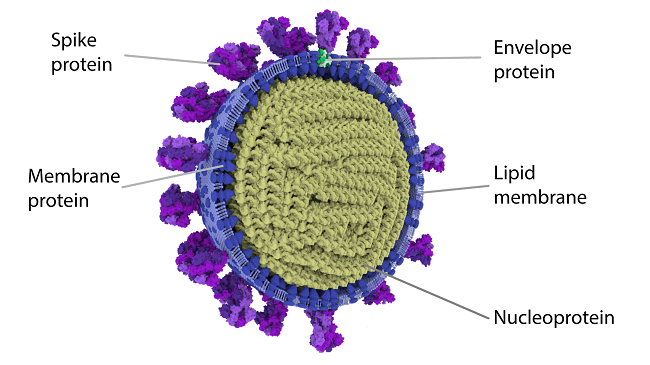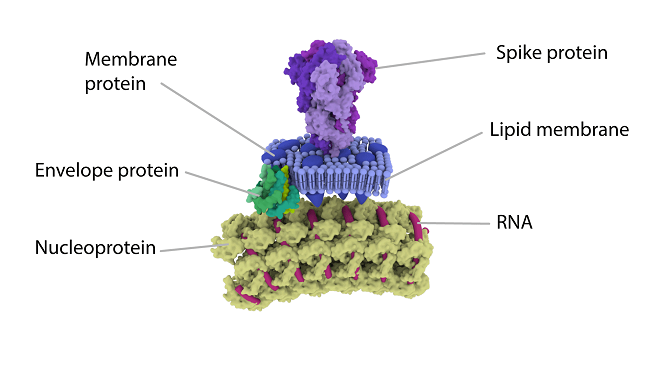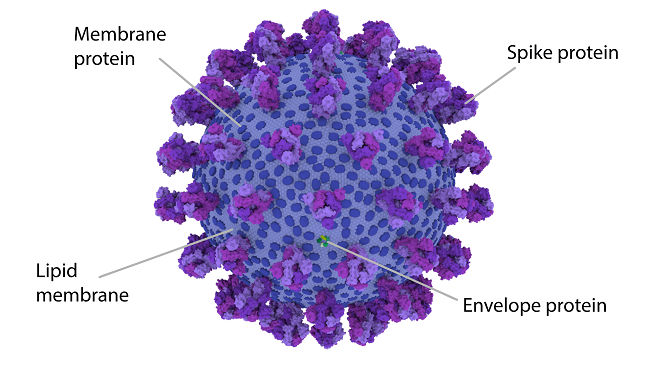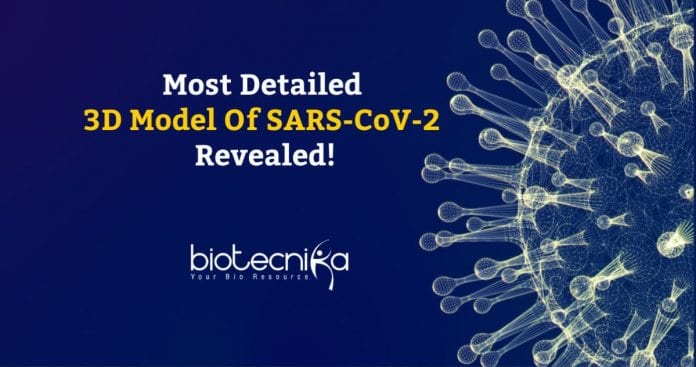DETAILED 3D MODEL OF SARS-COV-2 REVEALED
Scientists are gaining increasing amounts of information about the viral components that make up the infectious particles of the COVID-19 infection as the world races to understand more about the SARS-CoV-2 virus.
Now, one of the most detailed 3D models of the SARS-CoV-2 virus particle, both the exterior and the interior has been developed through a collaboration between experts.

The collaboration includes a graduate of The Glasgow School of Art (the University of Glasgow Masters in Medical Visualisation and Human Anatomy) Annabel Slater, a freelance scientific illustrator; The School of
Simulation and Visualisation at the GSA (SimVis) experts; and MRC-University of Glasgow Centre for Virus Research scientists.
On the UK Research and Innovation (UKRI) COVID-19 website, Coronavirus Explained, the striking new images and videos.
A series of striking images and videos have been created by the cross-disciplinary team by piecing together the complex scientific jigsaw of all the known details about this new coronavirus. The illustrations are one of the first and most detailed 3D representations of the virus particles, though they do not reveal any new information about SARS-CoV-2.
Thanks to a long-standing collaboration between The Glasgow School of Art (the GSA) and the University of Glasgow, it was possible to create the detailed illustrations so quickly.

Anyone who wishes to visualize SARS-CoV-2 can view it online and can also download as the illustrations and 3D models have been made freely available. In the near future, coloring sheets and an augmented reality educational app will be released as they are already in development at the CVR.
For anyone who wants to have a mental image of the invisible agent behind the current pandemic, it is hoped that this model will provide a valuable resource as they can visualize existing data about the particles that transmit COVID-19.
Annabel Slater said, “A whole new world of understanding, exploration, and interaction opens up by making scientific images into something 3D. By making the virus particle into something tangible and interactable, the science of a virus can be better understood. By making the invisible visible, I hope these SARS-CoV-2 virus particle models will help people.”
Leading the virology work in this project, a research fellow at the CVR, Dr. Ed Hutchinson said, “No single experiment can produce SARS-CoV-2 virus particle’s detailed image directly. They are extremely small like all viruses and also, every virus particle is slightly different from the next as they are irregular. Studying each component of the virus must be in isolation in order to obtain detailed information. Luckily, we have worked with MSc in Medical Visualisation and Human Anatomy students while doing projects for several years, which includes a project of a very irregular virus’s particle, the most detailed model of the influenza virus particle model developed by Naina Nair.”
Annabel approached us and enquired about collaborating on a model of the SARS-CoV-2 virus particle when the current pandemic began. She was able to pick up the methods needed to build a model of the virus as she was a graduate of the MSc program herself, and together we worked to interpret a set of data that combined the ‘missing information’ from studies of related viruses with the most up-to-date studies of SARS-CoV-2.”






























